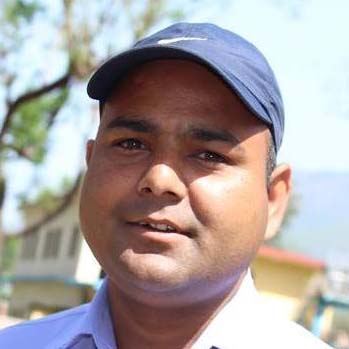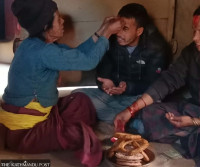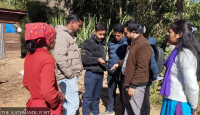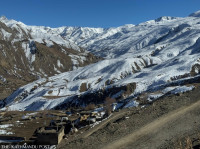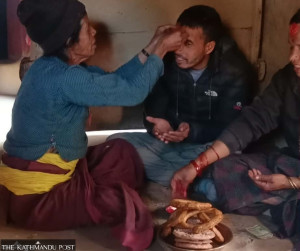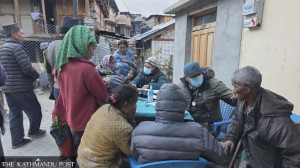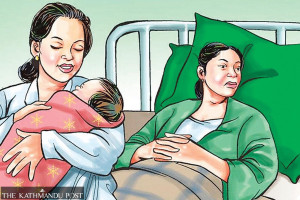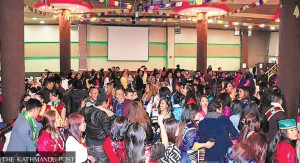Karnali Province
Resumption of Kailash-Manasarovar pilgrimage boosts economic activities in remote Humla
The influx of Indian pilgrims has benefited everyone from porters and farmers to hotel owners and airline workers.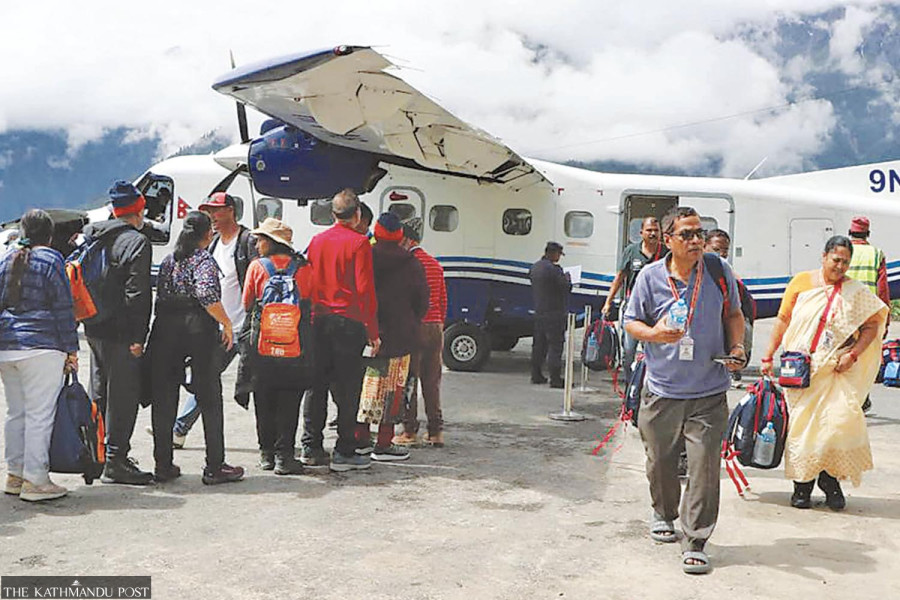
Krishna Prasad Gautam
Humla, a remote mountain district in Karnali Province, has witnessed an economic revival this year, thanks to the reopening of the Kailash-Manasarovar pilgrimage route through Nepal.
The pilgrimage route, mainly for Indian devotees, was reopened after a five-year hiatus, triggered first by Covid closures and then by geopolitical tensions.
From porters and farmers to hotel owners and airline workers, nearly every sector in the district’s modest economy has felt the ripple effects of the influx of Indian pilgrims traveling through the Simkot-Hilsa route to reach the sacred mountain and lake in Tibet, China.
According to the District Police Office in Humla, a total of 6,407 foreign visitors entered the district this pilgrimage season—5,957 of them from India and 450 from other countries. The local government collected Rs72.27 million in revenue from the pilgrims, while businesses in Simkot and Hilsa reported record earnings.
According to Bijaya Bhandari, chairman of Simkot Rural Municipality, the local government collected Rs1,100 per Indian pilgrim and Rs1,500 per visitor from other countries as sanitation fees. “From Indian pilgrims alone, we collected Rs6.55 million, while visitors from other countries contributed Rs675,000,” Bhandari said. “Altogether, the total revenue from this year’s Kailash–Manasarovar pilgrimage reached Rs7.27 million.”
Bhandari said the local governments also worked with hotels and travel agencies to ensure better sanitation and safety measures. “After a three-year gap, we wanted to make sure visitors left with a positive impression of Nepal,” he said.
Hotels in Simkot, the district headquarters of Humla, and in Hilsa near the Nepal–China border, were fully booked for nearly five months starting in late May. “We managed up to 80 guests a day, all bound for Kailash-Manasarovar,” said Bijay Lama, owner of a Simkot-based hotel. “Unlike in the years before Covid, no one had to sleep in tents this time. Every tourist was comfortably accommodated in proper rooms.”
A dozen new hotels opened in Simkot and eight more in Hilsa to meet the demand. Air traffic also surged. Nepalgunj Airport, the main gateway to Humla, saw as many as 83 flights to Simkot in a single day during the peak season, while five helicopters operated daily between Simkot and Hilsa to ferry pilgrims. Airline companies hired about 25 extra workers to handle the load and unloading of luggage.
“This is the busiest we’ve been since 2019,” said Mim Lama, who runs a mid-range lodge in Simkot. “Our hotel was packed for the entire season, mostly with Indian pilgrims. Others, including travel agency staff and flight crew, filled up the remaining lodges.” According to him, most hotels offered a Rs3,500 per day package including meals and accommodation. “Each pilgrim spent about Rs10,500 during their stay in Humla—two nights in Simkot and one in Hilsa before entering China,” he said. “The total turnover from hotels alone was around Rs77.2 million, with individual hotels earning between Rs1 million and Rs5 million.”
The tourism boom also benefited local farmers who supplied vegetables and fruits to the hotels. “Before the pandemic, most vegetables were flown in from Nepalgunj,” said Deepak Rawat, who manages Humla Resort. “But this year, almost everything came from local farms.”
Pilgrims also bought local products—Humla apples, walnuts, beans, buckwheat, millet, and the famous red ‘Marsi’ rice—as souvenirs to take home. Apples sold at Rs70 per kilo and walnuts at Rs10 per piece, while other crops fetched between Rs150 and Rs200 per kilo. “Farmers earned more than they ever have,” Rawat said, noting that local vegetables were selling for up to Rs250 per kilo at the season’s peak.
According to tourism entrepreneur Tsering Lama, the pilgrimage has created hundreds of temporary jobs for local residents. “Even the porters who carried luggage from Simkot Airport to hotels earned up to Rs3,000 a day,” he said. “A porter who carried baggage for a group of ten tourists could easily make that much.”
Around 150 people worked as porters during the season, while airlines, hotels, and travel agencies hired more than 200 workers on daily wages. “For a district that struggles with outmigration and limited economic opportunities, this was a lifeline,” Lama said.
China reopened the Kailash-Manasarovar route via Tibet on May 1, after keeping it closed since the start of the Covid pandemic. Compared to India’s Lipulekh and Nathu La routes, the Nepal route through Humla is shorter and less strenuous, making it an increasingly popular choice for Indian pilgrims, especially senior citizens. Travel companies in Kathmandu and Nepalgunj report that most pilgrims now prefer the Simkot-Hilsa route due to better logistics and smoother air connectivity.
The route, however, remains vulnerable to weather disruptions. “Frequent cloud cover and unpredictable winds in Simkot can delay flights,” said Lama. “But despite occasional cancellations, the number of pilgrims was remarkable this year.”
With the pilgrimage season now over due to the onset of winter, local authorities are already planning for next year. “We need to expand hotel capacity and improve service quality,” Bhandari said. “There’s also an urgent need to upgrade the Simkot-Hilsa road so that tourists can experience local life along the way.”
The Kailash-Manasarovar pilgrimage season typically runs from May-June to September-October.
According to Bhandari, Simkot Rural Municipality is investing in infrastructure to promote other scenic spots near Simkot, hoping to encourage pilgrims to spend more time in Humla. “If we can turn this seasonal influx into sustained tourism, Humla’s economy could change dramatically,” said Bhandari.
For one of Nepal’s most remote districts—where air travel is the only link to the rest of the country and livelihoods depend largely on subsistence farming—the Kailash–Manasarovar pilgrimage has emerged as a rare source of prosperity. “This season gave everyone—from farmers to flight operators—a reason to stay hopeful,” said hotelier Lama. “If managed well, pilgrimage tourism could keep Humla’s economy alive year after year.”
In the years when the pilgrimage was banned, Nepali operators even tried to keep the spirit alive by offering distant darshan (views) of Manasarovar and Mt Kailash from Lapcha in Namkha Rural Municipality in Humla. Some Indian pilgrims even took mountain flights to take a glimpse of the sacred lake and Kailash, a dome-like, distinctive peak in the Tibetan Plateau.




 16.12°C Kathmandu
16.12°C Kathmandu